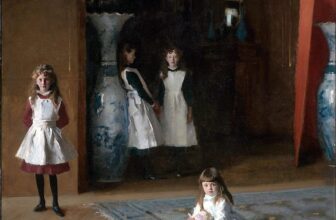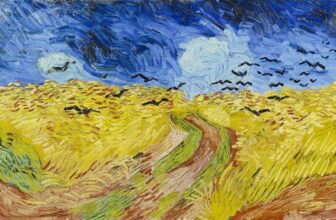Who Was Eleanor of Toledo
A Story of Power, Beauty, and Legacy
In the corridors of Renaissance grandeur, where art, politics, and fashion intertwined, few figures stand as tall or as beautifully composed as Eleanor of Toledo. Painted in shimmering brocade and immortalized with serene dignity, Eleanor’s portrait is one of the most iconic images of 16th-century Italy, a painting not merely of a noblewoman, but a story captured in oil and canvas. Behind the brushstrokes lies a tale of power, influence, motherhood, and resilience.
This is the story behind who painted the portrait of Eleanor of Toledo, what she was best known for, how many children she had, the identity of the young boy in the painting, and where this masterpiece can be found tod
Who Painted Eleanor of Toledo
The famed portrait of Eleanor of Toledo, where she is seated in resplendent attire beside a young child, was painted by none other than Agnolo di Cosimo, more widely known as Bronzino. A master of Mannerist portraiture, Bronzino was court painter to the Medici family in Florence, and his work is celebrated for its technical precision, refined elegance, and cool emotional restraint, traits perfectly suited to capturing the Medici ideal.
Bronzino painted the portrait around 1545, during the height of the Italian Renaissance. By then, Eleanor of Toledo had firmly established herself as a significant figure in Florentine political and cultural life. The portrait was not simply a depiction of a beautiful woman; it was a deliberate statement of dynastic power and continuity.
In the portrait, Eleanor is adorned in an elaborately embroidered dress of Spanish brocade, a testament to her noble heritage and wealth. The richness of her attire, meticulously rendered by Bronzino’s masterful hand, dazzles the viewer even today. The gown was likely real, worn by Eleanor herself, and represents the height of Florentine textile artistry.
Bronzino’s skillful use of light and shadow, his attention to the delicate textures of fabric and skin, and the calm, poised expressions of mother and child elevate the painting from mere portraiture to political and familial iconography. The identity of the child adds another layer to this artistic narrative.
Who Was Eleanor of Toledo
Born Eleonora di Toledo on January 11, 1522, in Alba de Tormes, Spain, she was the daughter of Pedro Álvarez de Toledo, the Viceroy of Naples, and a prominent member of the powerful Spanish nobility. Her upbringing in the court of Naples provided her with not only refinement and education but also political acumen and strong religious values, all of which would serve her well in Florence.
She became the wife of Cosimo I de’ Medici, Grand Duke of Tuscany, in 1539. This union was both strategic and symbolic. For Cosimo, a ruler with aspirations of consolidating Medici authority over Florence and Tuscany, the marriage to a Spanish noblewoman was a political masterstroke. It aligned the relatively young Medici dynasty with the mighty Habsburg Empire.
Yet, Eleanor was not merely a decorative bride. She quickly assumed a central role in court life and governance. In fact, during Cosimo’s frequent military campaigns and travels, Eleanor acted as regent, governing Florence with intelligence and authority. She was one of the first women in European history to hold such a powerful and visible role in state affairs.
Known for her piety, charitable works, and patronage of the arts, Eleanor helped shape the cultural and spiritual life of Renaissance Florence. Her court became a center of artistic patronage, and she supported artists, architects, and religious reform
Eleanor as Fashion Icon and Patroness
Perhaps one of the most lasting contributions of Eleanor of Toledo was her role in the development of fashion and cultural aesthetics in Renaissance Italy. The portrait by Bronzino helped cement her image as a style icon of her time. The elaborately detailed gown she wears in the painting was not merely clothing, it was a symbol of political power, noble status, and wealth.
Her influence in fashion extended beyond the portrait. Eleanor helped popularize Spanish-influenced dress in Italy, bringing an air of conservative elegance to the Florentine court. She also patronized local textile industries, helping make Florence a major center of silk and brocade production.
Her courtly style, dignified, opulent, and always impeccable, became the standard for noblewomen of the time. In this way, Eleanor’s legacy lives not only in politics or portraits but in the very threads of Renaissance fashion.
How Many Children Did Eleanor of Toledo Have
Eleanor of Toledo was not only a duchess and political regent, she was also a mother, and an extraordinarily prolific one at that. She bore eleven children over the course of her marriage to Cosimo I de’ Medici.
Her children played vital roles in extending the Medici legacy and political influence. Among her offspring were:
Francesco I de’ Medici – who succeeded Cosimo as Grand Duke of Tuscany.
Ferdinando I de’ Medici – who became Grand Duke after the death of Francesco and ruled with wisdom and strength.
Isabella de’ Medici – a noted beauty and intellectual, whose life ended tragically under mysterious circumstances.
Despite the hardships of childbirth in the 16th century, Eleanor remained a devoted mother. Letters between her and Cosimo reveal a woman deeply invested in the lives and education of her children. She insisted on rigorous schooling and religious instruction, preparing her sons for rule and her daughters for strategic marriages.
Tragically, not all of her children survived infancy, a common occurrence in the Renaissance. Yet her role as matriarch and educator remained constant
Who Is the Child in the Portrait
In Bronzino’s Portrait of Eleanor of Toledo with Her Son, the young boy resting affectionately against his mother’s side is believed to be Giovanni de’ Medici, one of her younger sons.
The inclusion of Giovanni in the portrait was a deliberate choice. At the time, it was rare for women, especially noblewomen, to be depicted with their children in official portraits. This image, therefore, broke with tradition to send a strong political message: the Medici line was secure and fertile, with the next generation ready to rule.
The boy’s calm demeanor mirrors his mother’s, and his placement close to Eleanor suggests familial intimacy as well as dynastic continuity. The composition, meticulously arranged, presents Eleanor not only as a duchess but as a mother and a dynastic symbol, the embodiment of strength and stability.
Sadly, Giovanni died at the young age of 19. Despite his early death, his presence in the painting continues to serve as a poignant reminder of maternal devotion and the fragile nature of life in Renaissance Europe.
Where Is the Portrait of Eleanor of Toledo Located Today
Today, Bronzino’s Portrait of Eleanor of Toledo with Her Son is housed in the Uffizi Gallery in Florence, Italy, one of the world’s most important collections of Renaissance art. It hangs among other masterpieces of the Medici era, offering viewers a glimpse into the opulence, complexity, and political imagery of 16th-century Florence.
The Uffizi, originally designed by Giorgio Vasari (a contemporary of Eleanor), was built to house the administrative offices (uffizi) of the Florentine magistrates. Over time, it became a grand gallery of Medici art patronage and now stands as a cultural beacon for visitors from across the globe.
Seeing the portrait in person is a breathtaking experience. The brushwork, the textures of Eleanor’s brocade gown, the soft gaze of the child, it all feels as vivid as it must have in 1545. Standing before it, one can almost hear the whispers of courtly life, the rustle of silk, and the quiet assertion of Medici dominance.
Legacy of Eleanor of Toledo
Eleanor died in 1562 at the age of 40, likely from malaria, alongside two of her sons during a journey to Pisa. Her death devastated Cosimo, who never fully recovered from the loss of his beloved wife. She was buried in the Medici family crypt at San Lorenzo, and centuries later, her remains were exhumed and studied, revealing the lavish clothing and burial traditions of the Medici court.
Despite her relatively short life, Eleanor’s impact was profound and far-reaching. She was a political partner, a matriarch, a fashion trendsetter, and a patron of the arts. Her image endures not only in the pages of history but on the canvas that immortalized her.
Through Bronzino’s painting, Eleanor of Toledo became more than a duchess, she became a symbol of dynastic power, maternal devotion, and Renaissance elegance. Her story reminds us that behind every great ruler, there is often a greater woman, quietly shaping the world with wisdom, grace, and style.
So, who painted the portrait of Eleanor of Toledo? It was the brilliant Bronzino, court artist of the Medici. What was she known for? Her political influence, regal fashion sense, and her role as a cultural patroness. How many children did she have? Eleven, many of whom played major roles in European history. And who is the child beside her? Most likely Giovanni de’ Medici, her beloved son. And where can you find this masterful portrait today? In the majestic Uffizi Gallery in Florence, a fitting home for one of the Renaissance’s most iconic women.
Eleanor of Toledo remains a shining emblem of power, poise, and profound influence. Her portrait tells not only her story but the story of a dynasty, and of a time when art and politics painted the world in beauty and ambition.




